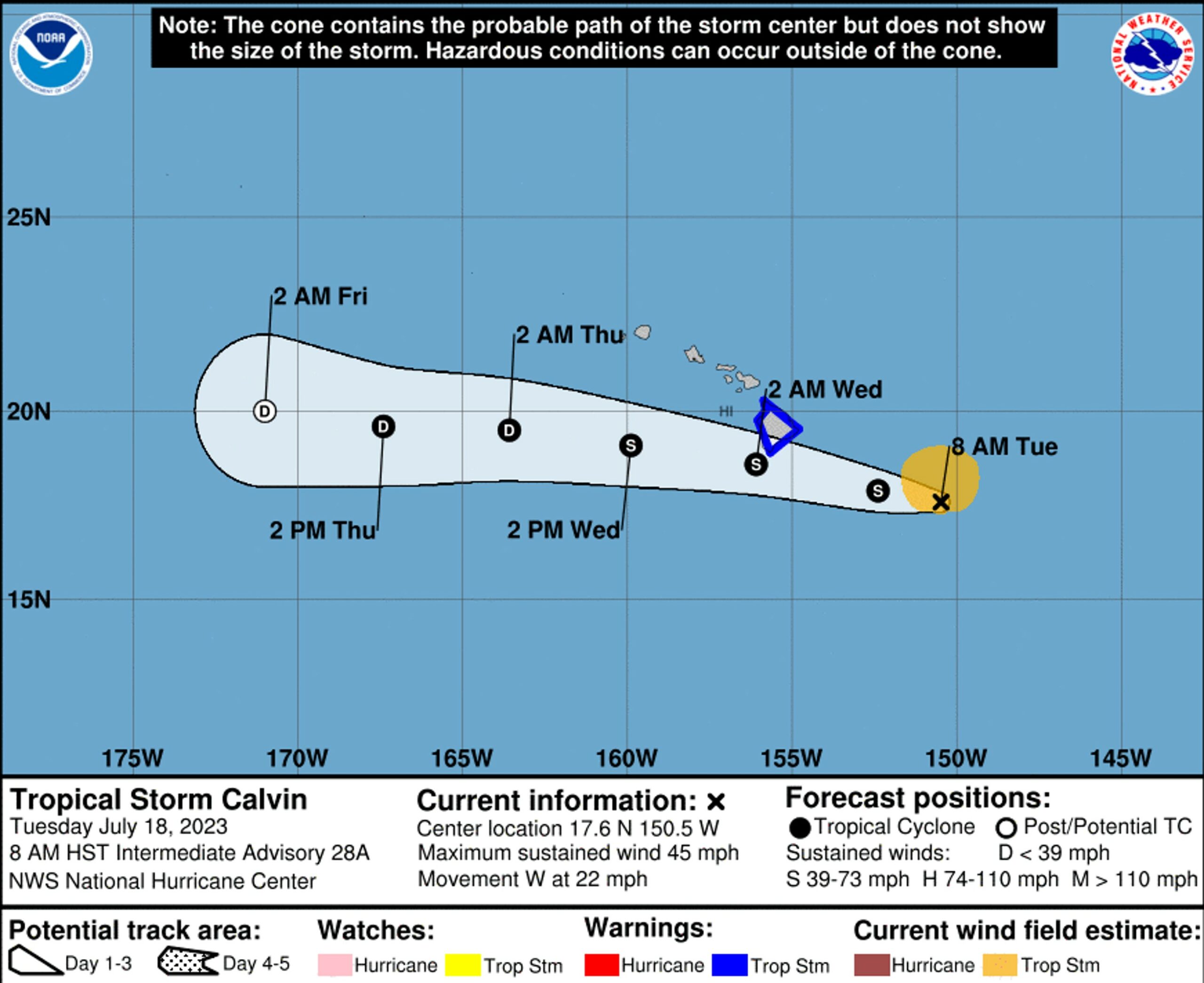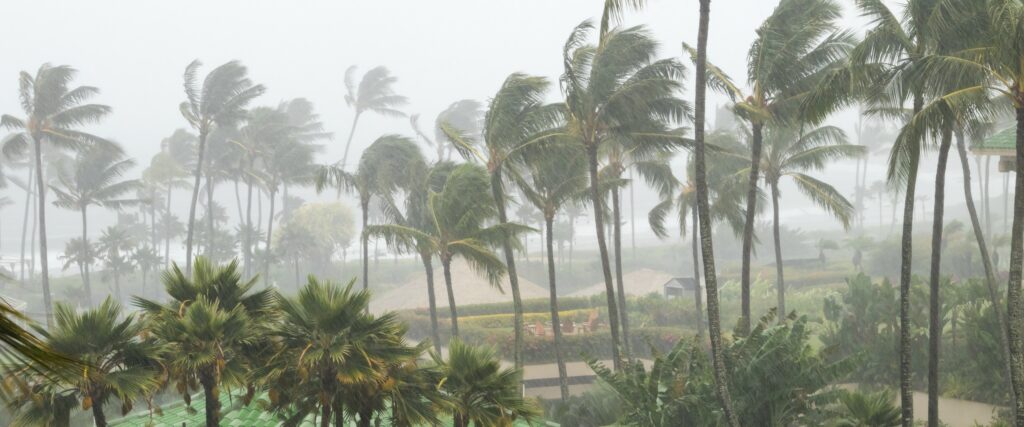
Heavy Rain, Flooding, and Chance of Severe Weather Staring Down the Southern U.S.
January 22, 2024
Posted: July 18, 2023 1:24 pm





A tropical storm warning is in effect for parts of Hawaii as Tropical Storm Calvin makes its way to the islands. Here is the latest on this impending weather situation.
Tropical Storm Calvin is expected to travel just to the south of the chain of the Hawaiian Islands this week, bringing gusty winds, torrential rain, and potentially dangerous sea conditions to the popular vacation spot. The arrival of Calvin will be the state’s first visit by a tropical system in over a year.
Tropical storm warnings were put in place for the Big Island on Tuesday morning as the feature inched closer. As of early Tuesday, the National Hurricane Center (NHC) said that Tropical Storm Calvin was moving at a fast clip of 22 mph. It was located about 400 miles east-southeast of Hilo, Hawaii.
Visitors to the north and east-facing beaches of the Hawaiian Islands should expect rough surf conditions and potentially dangerous rip currents throughout the day Tuesday as the system approaches the region. You will want to exercise caution if headed to the beaches this week. Be sure to heed any red flag warnings.
In addition to the tropical storm warning, the National Weather Service (NWS) in Honolulu issued a high surf warning for the east-facing beaches of the Big Island on Tuesday and Wednesday.
Tropical Storm Calvin will also likely unleash torrential rain and the chance of flooding beginning Tuesday night and lasting through Thursday. The winds may be strong enough to create localized power outages.
Much of the island chain can expect to see 1 – 2 inches of rain from Calvin. The heaviest hit portions of the Big Island should be prepared for 4 – 8 inches of rain. The mountainous terrain of this island will also be at risk of seeing mudslides.
Although the rain will certainly put a damper on vacation plans during the height of the summer travel season, some of the islands will welcome the rain due to ongoing drought conditions. According to the latest report from the U.S. Drought Monitor, the western and central portions of Maui and a part of a Big Island are under the designation of a moderate drought.

Calvin is not expected to intensify as it makes its last approach to Hawaii. This is because the feature will find cooler ocean waters that will work to break down the storm and minimize its impacts.
The storm is forecast to rapidly lose its strength and organization as it moves across the islands, eventually becoming a tropical rainstorm before fully breaking up at the end of the week.
Calvin will mark the closest encounter with a tropical feature for Hawaii since Hurricane Darby tracked just south of the Big Island in July of 2022.
It has been a long journey for Calvin, first coming together on July 7 off of the southwestern coast of Mexico. At the time of its formation, forecasters had predicted that Hawaii would likely see some of the storm’s impacts as it moved about 3,000 miles across the Pacific.
Calvin was able to strengthen last week when it found warm ocean waters without any inhibiting wind shear. The storm reached a classification of a Category 3 hurricane at its peak.
The East Pacific basin is not the only part of the ocean seeing tropical activity. Tropical Storm Don is currently churning in the central portions of the Atlantic Ocean. According to the NHC, this system took on the designation of a tropical storm on Monday night.
As of Tuesday morning, the NHC said that Tropical Storm Don was located about 700 miles west of the Azores Island. The storm is boasting maximum sustained winds of 40 mph as it moves to the southeast at a speed of 12 mph.
The current models predict that Don will move to the south throughout the day Tuesday before making a turn to the west on Wednesday and Thursday. While Don is likely to gain strength over the course of the next few days, there are no major land masses in its path.
Meanwhile, meteorologists are monitoring another wave that has formed off of the coast of Africa. This is typically the time of the year when the tropics tend to show more signs of life.
Did you find this content useful? Feel free to bookmark or to post to your timeline for reference later.

January 21, 2024

January 19, 2024

January 18, 2024